Legend of Zelda: Twilight Princess E3 2005 Demo Walkthrough Impressions
We have plenty of new details on The Legend of Zelda: Twilight Princess from Nintendo's hour-long demo and walk-through session. Read on to find out the identities of some of the characters from the trailer as well!
Yesterday we had the opportunity to sit down with Nintendo for a discussion about Legend of Zelda: Twilight Princess. This discussion was more than an hour in length, and it took place between members of the media; Bill Trinnen, a member of Nintendo's localization team; Koji Kondo, the sound producer for the original Legend of Zelda and Super Mario Bros.; Eiji Aonuma, producer of Twilight Princess; and Shiguru Miyamoto, creator of Zelda, Donkey Kong, and, of course, Super Mario Bros. What we're going to attempt to do in this report is describe the question-and-answer session that took place, which offered up a wealth of new information on the game.
The first question went to Aonuma, who was introduced at Nintendo's press conference on Tuesday as both the producer and director of Twilight Princess, leaving open the question as to what precisely his role in the creation of the game was. He says that originally, Twilight Princess was developed under his supervision. But he later took a build of the game to Miyamoto, who made some "recommendations" about the game. Aonuma used the metaphor of bringing a tea table to Miyamoto, who then overturned the table, leaving Aonuma to right the table and put it back in order, meaning his job evolved at that point into one that involved much of the hands-on work that a game director would undertake. Miyamoto then expanded the answer by saying his job was to help Aonuma clean up the table. He went on to say he found the job very enjoyable. He further stated that he was also helping with some of the general production tasks Aonuma was too busy to handle.
Next up were some comments on Wind Waker and its relation to Twilight Princess. Aonuma's long answer about how the art style of Twilight Princess evolved from Wind Waker first touched on the mixed reaction that Wind Waker's art style received from fans. He said Nintendo felt that around half its fans enjoyed the style, while the other half were displeased by it. He also added that they (Nintendo) always intended to listen to that feedback. They said they made "adjustments to their thinking" but that they had already intended to make a more adult Link in the next Zelda title after Wind Waker, which is represented in the more realistic graphics in Twilight Princess.
Aonuma then spoke about the gameplay mechanics that were made possible by the animated style of Wind Waker. He was then asked about how the realistic graphics of Twilight Princess might affect the gameplay of that title. He said the graphics in Wind Waker represented both the gameplay and feeling they wanted to bring out of players. He added that the realistic gameplay of Twilight Princess would correspond to a more realistic feel in terms of the control mechanics. The Nintendo team is still trying to polish up some of the mechanics, so it wasn't prepared to reveal all the ways in which the art style is influencing gameplay, and vice versa.
The final question before talking about the E3 playable demo was directed toward Miyamoto, who was asked whether he thought the current version of Twilight Princess could stand to have more elements of realism in it, something Aonuma had referred to in his previous answer. Miyamoto responded by saying the realistic graphics were important in conveying the kind of story they were attempting to portray, but he drew a distinction between realistic graphics and a realistic sense of interaction with the world. He feels the graphical style is currently good, with some room for improvement in terms of realistm, but he felt a more important area for the team to focus on lies in how realistic Link's interactions with the world feel. In other words, he feels immersion in gameplay seems to be emphasized over immersion in realistic graphics. Miyamoto says he emphasizes a continual learning process while creating games, and he hopes to transmit that to the team so it can continually improve the game until it's ready for release.
Next up was an explanation of what we'll be seeing on the E3 show floor, and the group's members talked about the playable demo that will be available to the public when the show opens on Wednesday. There are going to be four areas available to play on the floor, including a town area, a mounted horse battle, a dungeon, and a boss battle. They started off their walk-through by entering the town, where a herd of goats was shown, as well as Link and a villager. It's revealed that Link starts the game as a cowboy, of all things. Of course, Aonuma was asked about this unique design choice. (While Aonuma was answering this question in Japanese, Link was revealed to call his horse out of a nearby barn with a whistle. After he mounted, the player entered a mini-roundup game, where Link, on horseback, was responsible for herding the goats into the barn by running behind them and attempting to shepherd them into the barn.) As Aonuma's answer was translated, it was revealed that the team was motivated to bring the horse back from Ocarina of Time. Aonuma went on to say that players will be able to actually name the horse they obtain in Twilight Princess.
He then revealed that the Hyrule in this game is going to be fairly large in terms of its graphical representation. In fact, it will be large to the point where it would be impractical for Link to walk from area to area. The cowboy theme is also a way to emphasize the feeling of partnership between Link and his sturdy mount. It was also important to justify the fact that Link was a proficient horseman right out of the gate. Aonuma goes on to state that rather than a Clint Eastwood style of cowboy, it would be more accurate to call Link more of a cowhand. Further clarification revealed that Link probably wouldn't even be considered a "cowboy" in Western terms; he would be more accurately referred to as a shepherd. But since that word doesn't translate well into Japanese, the team decided to use the word cowboy as an easy reference point.
After Link dismounted from his horse and started exploring the town on foot, he began talking to civilians. The Nintendo team was then asked whether the demo revealed the beginning level of the game, as well as what kind of relationship Link has with the inhabitants of the town in the demo. The answer was that the village is actually a bit of a distance away from Hyrule, and to emphasize Link as something of a fish out of water, he will begin the game in the town; he will then travel to Hyrule later on. The early portions of the game will involve him preparing for his trip and providing a storyline justification for his journey. It was also confirmed that this Link is an entirely new incarnation of the hero; he isn't the same character from Ocarina of Time or Wind Waker.
While Link explored the town further, calling a hawk friend to his arm with an ocarina and picking up chickens as he would a pot or a shrub in previous Zelda games, the team was asked how the storyline of Twilight Princess fits into the overall narrative of the Zelda series. The response was that, chronologically speaking, this game takes place a few decades after Ocarina of Time, but before Wind Waker. Other than that, no immediate details on the overall plot were forthcoming.
As Link began training with his weapon--by striking at a wooden target with a wooden sword while being egged on by a trio of village youngsters--it was asked how Link will make the transition from cowboy-shepherd to savior of Hyrule. The answer was simple and somewhat purposefully literal: You pick up your sword and head toward the forest. It was explained that there is a scene detailing precisely how Link gets swept up into the larger arc of the story, but Aonuma seemed reluctant to spill the beans at this point in the demo. It didn't take long for Link's motivation to be revealed, though, as shortly after entering the forest outside of town, one of the young villagers is kidnapped by a fearsome goblinesque foe riding a boar, who also happens to knock Link on the head with a mighty blow from his mace. Shortly after kidnapping the child, the leader of the goblins blows on his horn, opening up a portal in the sky. It isn't shown in the demo how these portals work, but viewers of Nintendo's press conference from E3 will remember one of these portals being used to transport creatures into Hyrule. So it seems reasonable to assume they can be used for egress from as well entry into the twilight world that mirrors the "real" Hyrule.
After Link awakens from his blow, he rushes off to find the boar rider but is unsuccessful. Instead, he happens across a cave, within which an unnatural darkness dwells. This is later revealed to be the magical energy known as the twilight. Although Link is hesitant to head into the cave, the Twilight happens to reach out and grab him, pulling him into the cave. The resolution of this episode isn't shown, but Aonuma says that this is the beginning of the storyline that ends up with Link becoming a lycanthrope, as was revealed in the Nintendo press conference footage. He further elaborated on the other animals in the game by saying that when Link becomes a wolf, he'll be able to communicate more easily with other animals, which will both act as a big theme in the game and serve to advance gameplay.
Next up was the horse fight demo, where Link was attempting to track down the boar rider, who had lashed the kidnapped child to a pole sticking up from his boar. Link had to fight his way through numerous other boar riders to reach the boss rider. He seemed to be able to slash from side to side with his sword, and there was also some kind of speed meter at the bottom of the screen, consisting of six whip icons that can be used to force a temporary burst of speed from the horse. These whips seem to be used up when you hit the A button, but they can be restored by successfully striking other boar riders. The trick here seems to be to chase down the boss boar rider, who moves significantly faster than does Link while he's mounted, by using the whips for extra speed, slashing at him with your sword, then falling back and replenishing your meter by striking the peon boar riders and repeating the cycle. While all this is going on, Aonuma was asked about the rather dark, gritty, even "cruel" nature of the scene, which, again, features a small child being held hostage and used as bait in the middle of a fierce battle. He said they weren't going to shy away from scenes that could be considered to be cruel or harsh; if the story demands it, then they'll put in scenes of drama without shying away from the realistic representation the game is notable for. In this instance, it's felt that the plight of the child will encourage players to identify with Link's need to quickly end the fight and rescue the boy before anything bad can happen to him. (Although it's doubtful the child can actually be injured during the melee.)
After some discussion of the artificial intelligence involved in horse riding (occasionally, Link can be thrown from the horse, which will automatically stop and wait for him to remount), Link finally manages to strike the boss boar rider, forcing him to drop the horn and escape from the field. He leaps over a small set of wooden spikes to reach a bridge area. Link follows, and the spikes are set on fire by an archer, forcing Link to face off with the boss in a joust-like duel. It's revealed here that the horse riding will be a major part of the game and that any items that are feasibly usable on horseback should be available, such as potions.
After Link and the boss are locked into a joust, it takes a few times for the player playing the demo to figure out how to beat the boar rider. The secret is eventually revealed to be to just charge at the boss straight on, then duck to the right just before you collide with him, slashing him as you pass. With this properly pulled off, the boss is thrown from his boar and into the chasm below, presumably leaving you to free the hostage. Footage of the aftermath of the fight isn't shown, though, as the demo immediately shifts focus to reveal Link in one of the game's dungeons.
It's quickly revealed by Aonuma that each dungeon in Twilight Princess will indeed be thematically different as you proceed through the game, as has been a tradition in most Zelda games. In the dungeon in the demo, Link will be tasked with taking advantage of the help offered by a number of monkeys in the dungeon while fighting off the predations of numerous giant spiders and serpent men. Not all the monkeys are helpful, though, as one is soon shown using a boomerang to cut down a wooden bridge, preventing Link from passing. Soon enough, though, one of your helpful monkey friends reveals another path that's available to you. The monkey then attaches himself to a rope, allowing Link to grab its legs and swing across the gap, which would otherwise be impassible.
While all this is going on, Aonuma was answering questions about the combat system used in Twilight Princess. He reveals that although the combat engine was originally based on that from Wind Waker (and indeed, it includes touches like the trademark split-second pause when Link lands a strike), so many small tweaks and additions have been made that Nintendo's developers are leaning toward calling it a completely new engine, just because the number of cumulative changes have effectively eliminated most traces of the Wind Waker combat system from the game.
The next question was about the boomerang, which Link was using to flip triggers throughout the dungeon as he attempted to get through. It had a kind of wind effect added to it, which turned it into a tornado after being thrown, which one of the journalists was curious about. Aonuma said that it's called the "gale boomerang." He went on to say that they wanted to bring back a classic item but also wanted to include new usage and gameplay applications. He added that numerous classic Zelda items will also be remade, in that they'll also be recognizable from previous games but will have new gameplay twists. There will also, of course, be all-new items, though Aonuma didn't detail any of them.
As all of this was being relayed, Link and his monkey friend maneuvered through the dungeon, eventually coming across another friendly monkey trapped in a wooden cage atop a pillar. After the monkeys made their affections for each other known, Link busts down the pillar, toppling the cage and freeing the second monkey. In response to this, a pair of snake men descend and attack Link. After finishing them off, Link gains the help of both monkeys (who clap to show their newfound affection for him). Together the monkeys perform another helpful swinging maneuver, helping Link swing across an extended gap via a rope.
One of the questions at this point revealed a tidbit that should please fans: The inventory system has been modified from previous games so that it appears as a circular screen instead of the collection of squares that often appeared before. This is to prevent players from being able to count precisely how many items they have left to discover in the game, as this information was often a semi-spoiler that detailed how far you had to go before you could finish the game. This is intended to keep the number of total items in the game a secret from the outset, preventing you from just counting up the number of boxes remaining on your inventory screen to give you a simple barometer of how far you are from the end of the game. This is also intended to make accessing items a bit easier, because they'll all be on one screen.
Shortly after this, Link reaches the boss fight of the dungeon, in which he's forced to fight against two large tentacles, a la Audrey from Little Shop of Horrors. The question here is targeted toward Miyamoto, who's asked about the boomerang's new functionality. He says it's basically the same boomerang they've been using all along. However, the new wind power simply adds some new effects that become important in certain locations.
For instance, the boss fight quickly evolves into a fight involving one large tentacle. There's also the formerly mentioned evil monkey, who's sliding back and forth across the room on a rope while carrying a bomb. To defeat the boss, you have to use your gale boomerang's whirlwind to lock on to the monkey. Then you lock on to the boss tentacle before releasing the boomerang. When the boomerang hits the monkey, it takes the bomb from it and blows it over to the boss, dealing damage and forcing its head to drop down to the ground. This, in turn, reveals a small tongue inside the boss's head, which Link is able to strike with his sword. After running through this sequence a couple of times, the boss keels over, revealing a small nut, which is presumably the prize for conquering the dungeon.
To wrap up the demonstration, Aonuma responds to the question about the number of dungeons in the final game. He doesn't respond with a hard number, typically enough, but instead says the game intends to surpass Ocarina of Time, presumably in quality. He also says that quantity isn't the only way to measure that goal. He further confirms that the goal for the team is to finish the game and publish it by the end of this year.
Next up, the Nintendo team showed the Zelda trailer from the Nintendo press conference one more time. They talked a bit about the portions of the trailer that weren't in the E3 floor demo. The first question was about some of the audio from the trailer. Specifically, someone wanted to know whether the trailer was a fully orchestrated piece of music. Mr. Kondo revealed that it was indeed a full orchestra, because the trailer called for something with a good dynamic sound to match the forcefulness of the images. The music was composed by Kondo's sound team, and the arranger was Michido Oshima, apparently a famous music arranger for Japanese movie and television soundtracks. Miyamoto adds that Ms. Oshima was apparently a big fan of Nintendo and was happy to have the opportunity to work with the company. Kondo also added that this was his first opportunity to record a track with a full orchestra. He did reveal that the orchestra won't be used throughout the entire game, but it will appear in especially dramatic scenes, at which point Aonuma jokingly pointed out that this will only occur when it's "fiscally responsible" to do so.
Another question for Kondo was whether he was also involved specifically with the sound effects, in addition to the orchestral score, to which he vaguely replied that that would indeed fall under his title of sound producer. He said the game will use Dolby Pro Logic II, as did Wind Waker.
Next they moved on to questions about the graphics in the trailer. It was asked whether the black-and-white castle at the beginning of the trailer was in fact Hyrule Castle, and if so, then how would that fit into the game's story. Aonuma revealed that, yes, it was Hyrule Castle, and, occasionally, Link will be sucked into the twilight of the title (as he was in the cave in the demo). He added that Hyrule will gradually be transformed into a twilight version of itself. It was then asked whether that explains the wolf mechanic and whether Link becomes the wolf when he's sucked into the twilight. Aonuma says the twilight is fueled by magic and that Link's transformation is indeed a result of the magical energy within the twilight realm. After the revealing of the twilight realm, it was asked whether Twilight Princess will feature a dual-world mechanic, as did Link to the Past and Metroid Prime 2: Echoes. The response indicated that this idea was indeed used in Zelda before, and Aonuma commented that the reference to Metroid Prime may refer to the fact that the Retro Studios team took inspiration from the previous Zelda games, at which point Miyamoto jokingly remarked, "Yes, they copied us!" After a bit of banter regarding where to lay the onus of inspiration (Miyamoto is, of course, one of the producers of the Metroid Prime titles), the answer was yes, the game was effectively split into two areas. This will be a part of the gameplay.
Given the setup of the worlds, is this where the twilight portals come in to play? Do they shuffle Link between the worlds? The answer is that Hyrule will gradually become "twilightified" during the course of the game, in that the portals will spread further through the "real" world. Eventually, Link will be able to master the effects of the portals so he can use them to travel between the worlds, when necessary, to advance the game.
The next question revolved around who the character in the black robes that appeared at the beginning of the trailer was. The straightforward (and surprising) answer was that the character is, in fact, Princess Zelda, apparently in some newly reimagined form, or perhaps in a twilight form. Is Zelda somehow connected to twilight or Link's transformations into a wolf? It appears the robe she's wearing is based on the robe traditionally associated with funerals in Japan, so she may be wearing it to symbolize her inability to save Hyrule from the twilight...although no specifics were revealed.
The next question revolved around Link's transformation and how it affects gameplay. The primary difference is that Link can't wield a sword while in wolf form. However, he has heightened animal senses while transformed, and he'll be able to both talk to animals and employ special attacks, all influenced by the unnamed character riding on his back. Speaking of this character, her name is Midna, and she's a resident of the twilight realm. She has her own motivations and goals in her realm, and she hopes to team up with Link to complete some of her own goals in her own world, while also offering Link the opportunity to pursue his own goals while in wolf form by acting as a guide.
At the end of the conference, the mediator asked the participants if they wanted to say anything in closing about the game. Kondo said that in addition to the new graphical style, the team's also been focusing on creating music and sound effects that match and enhance the visual style of the game. Aonuma said that Miyamoto once stated, earlier in development, that Link was almost doll-like or puppetlike. He said they've been concentrating on the fluidity of the animations and that he's really excited about moving forward in the development so they can build a game that fulfills all the users' expectations. Miyamoto rounded up the conference by saying they intend to have players feel like they inhabit the world of Zelda. He then added that they aim to create a game where the players feel like they actually are Link and that they're the hero of the story.
With that, the Zelda team hinted at a surprise waiting for everyone in the Zelda section of the Nintendo booth, thus winding down the press conference. We hope you've found some exciting new gameplay details in this report, and, of course, we encourage you to stick around for more of GameSpot's E3 coverage of The Legend of Zelda: Twilight Princess.
Got a news tip or want to contact us directly? Email news@gamespot.com
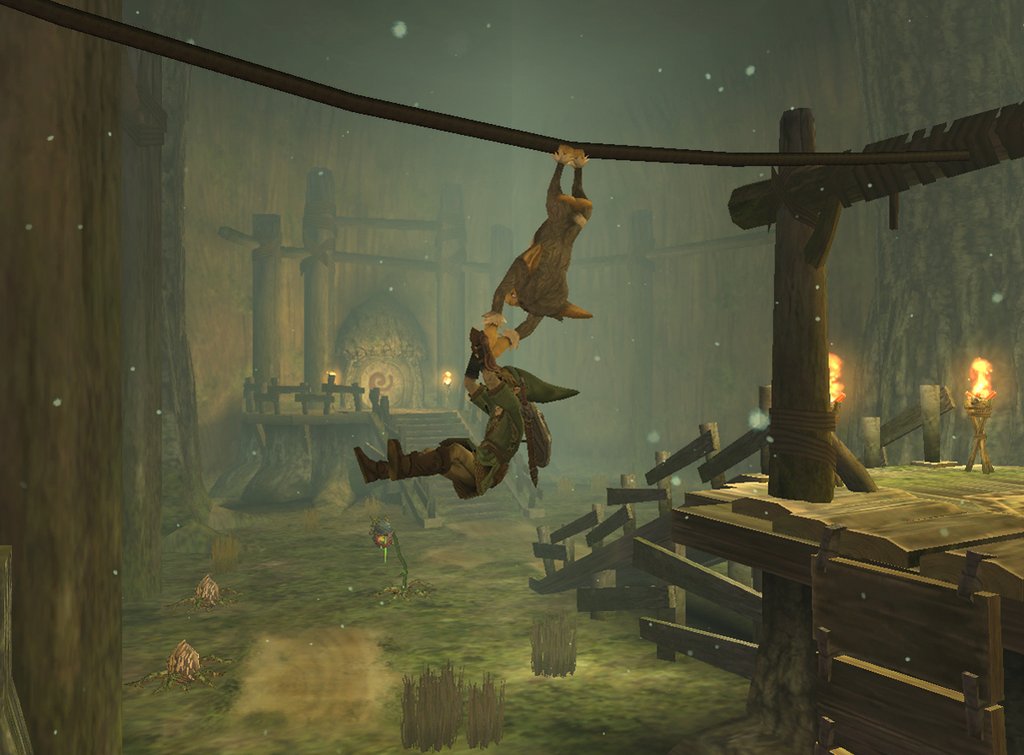
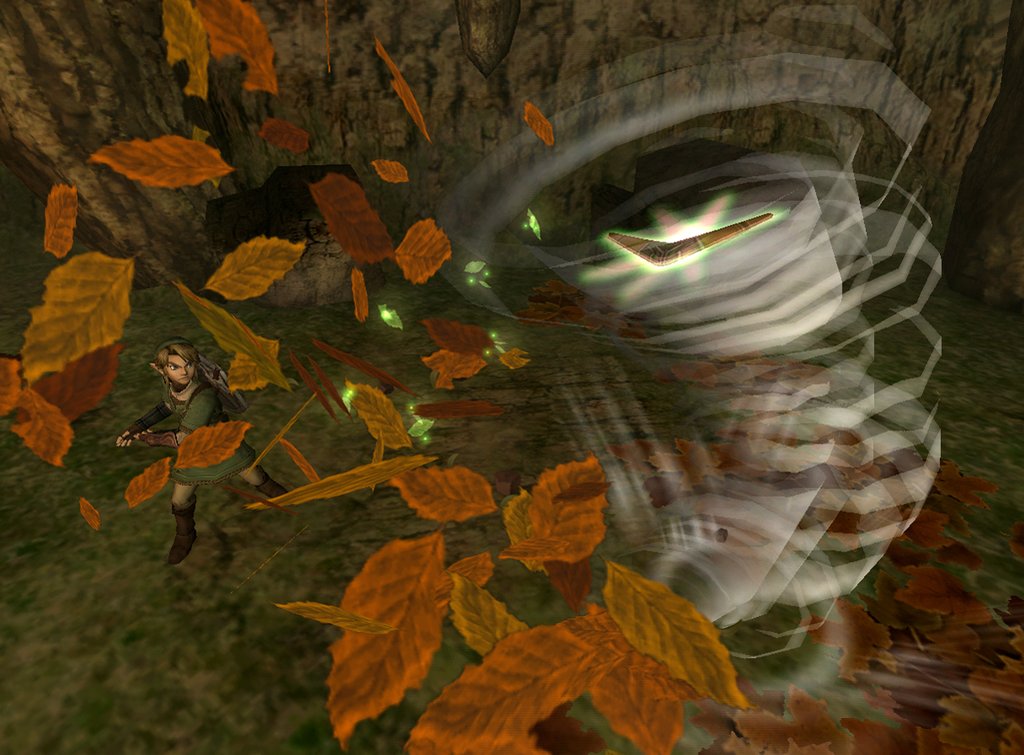
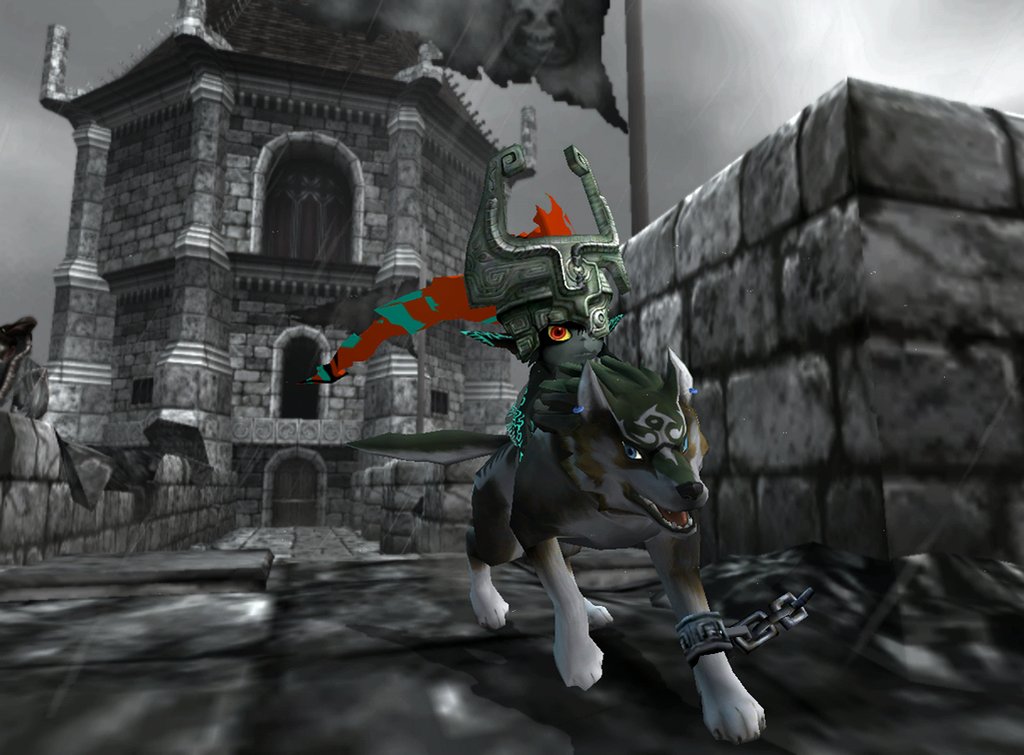
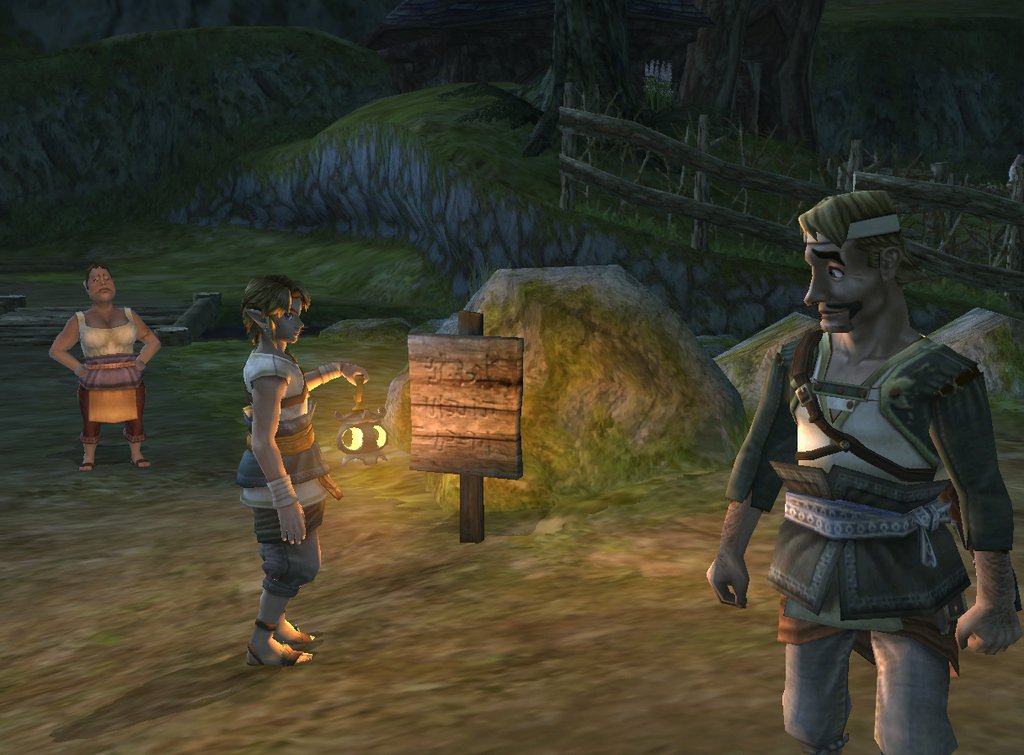
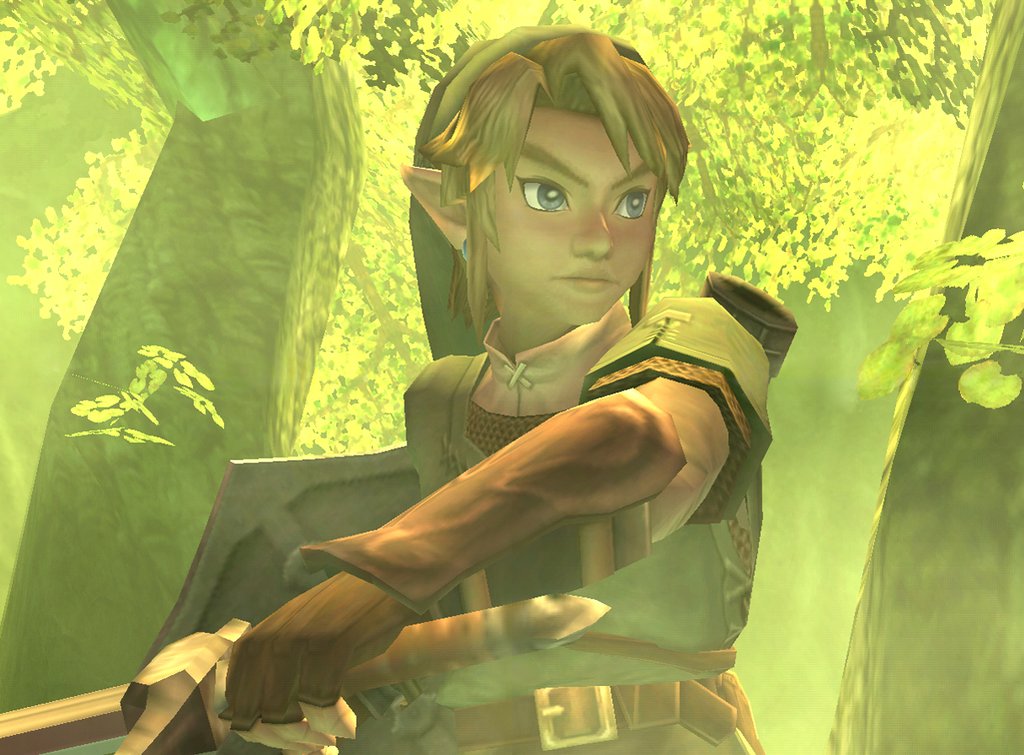
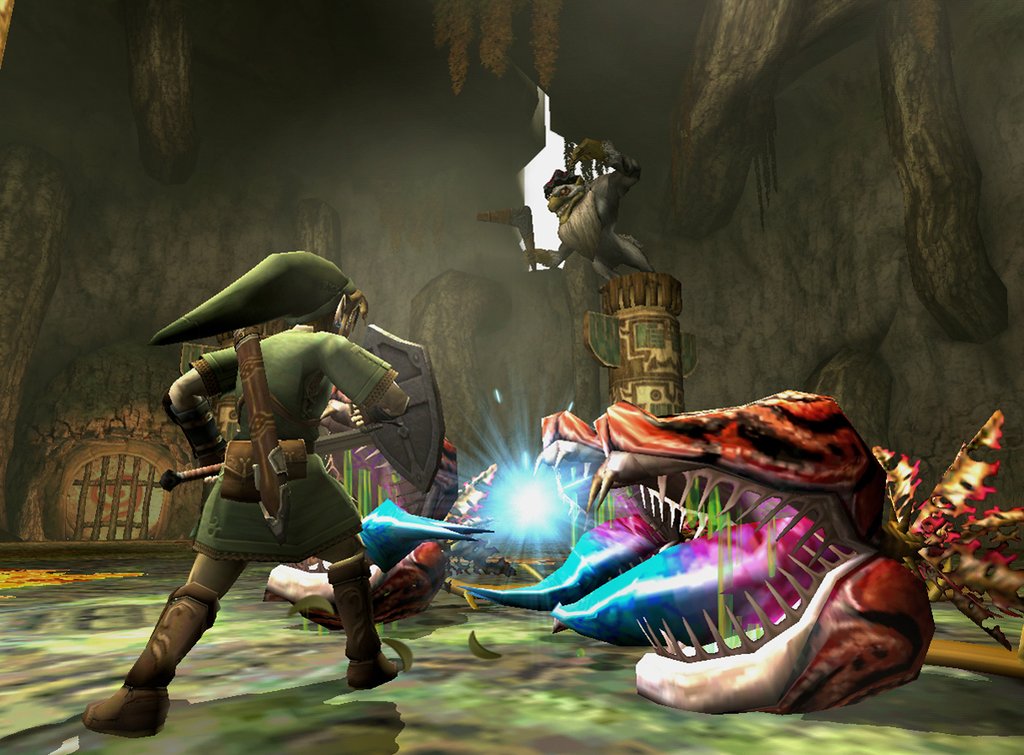
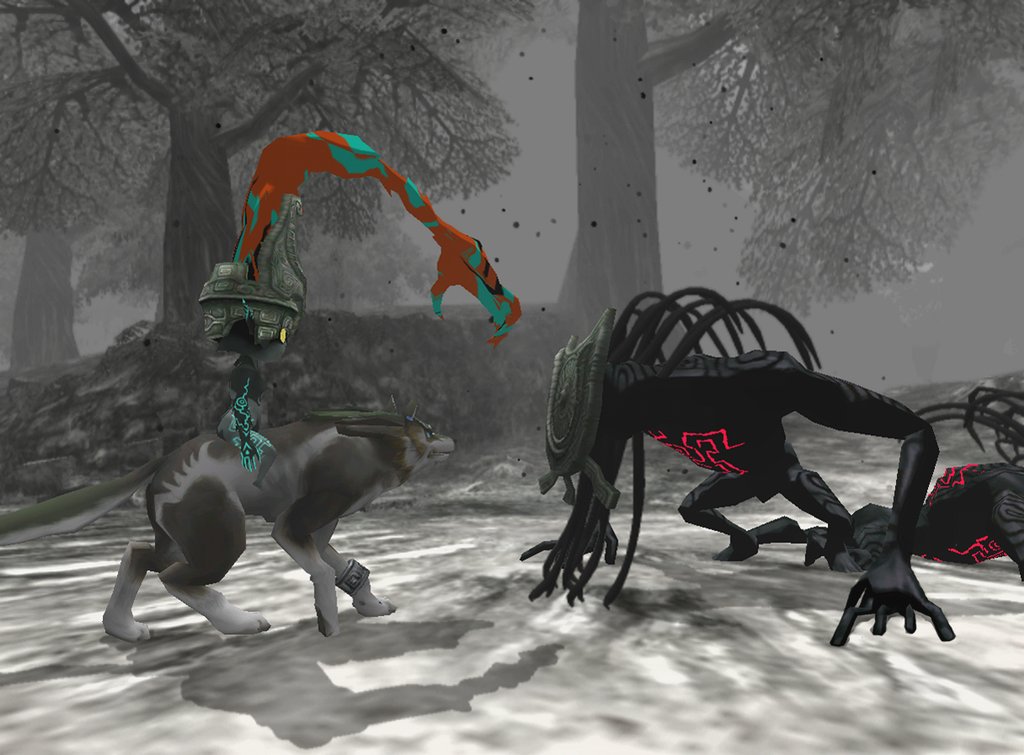
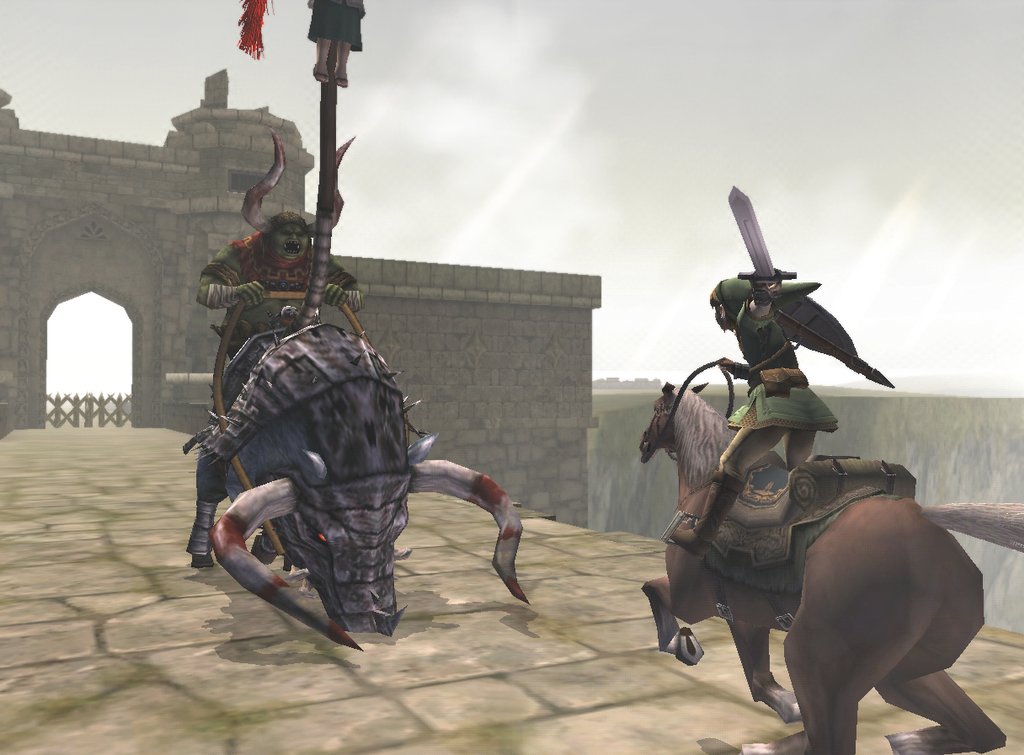
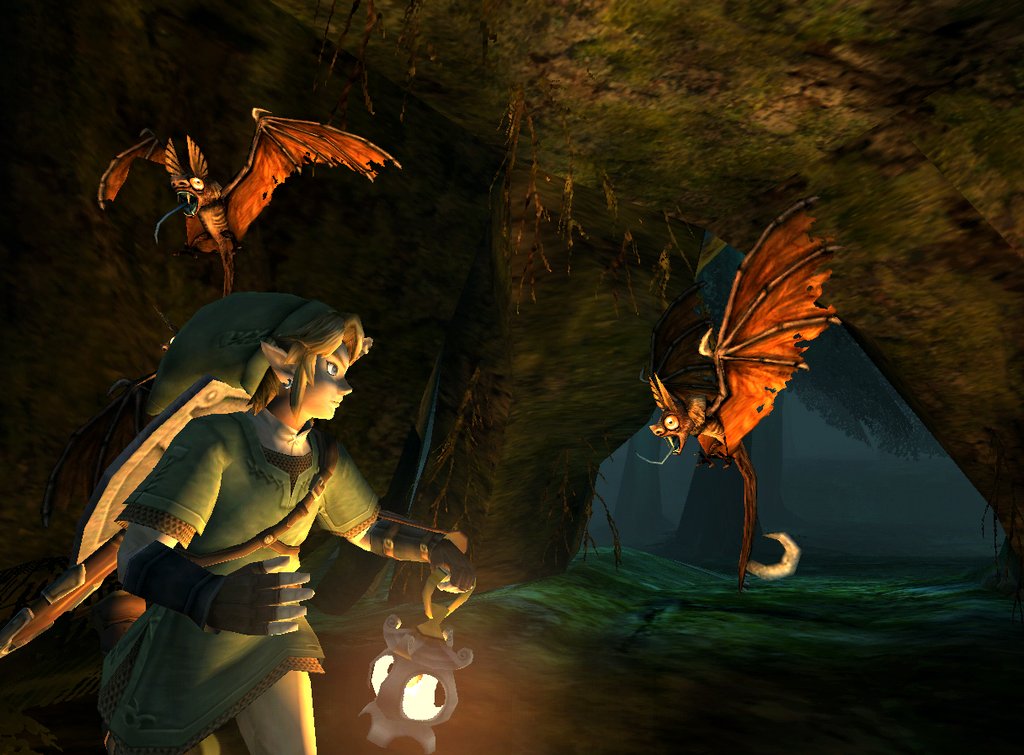
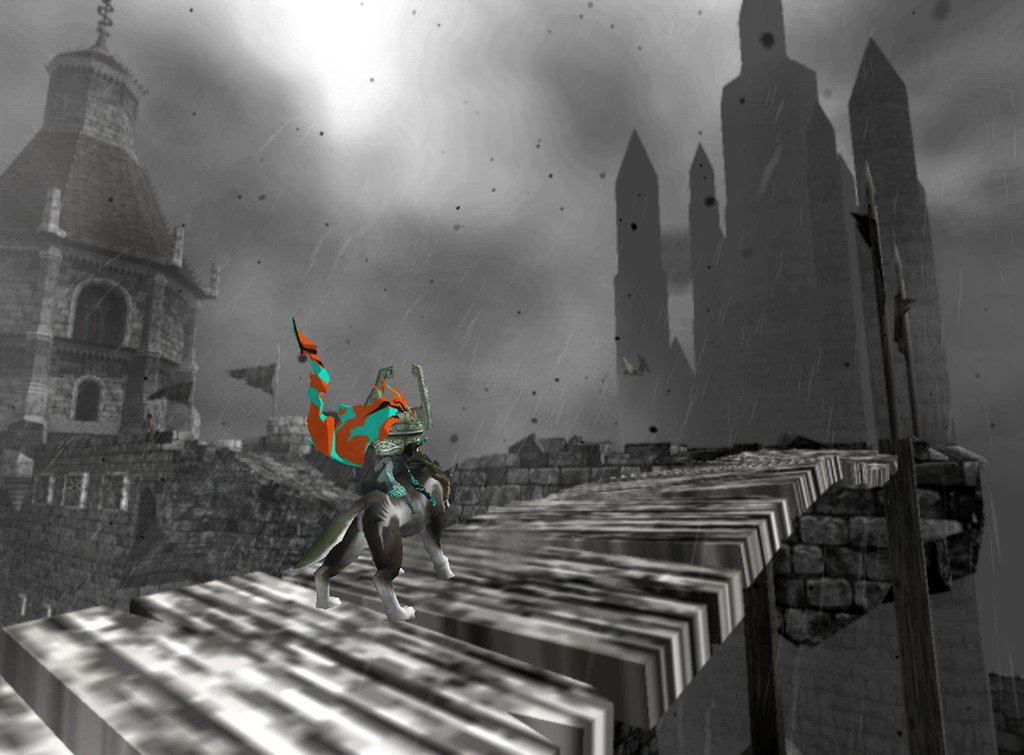
Join the conversation